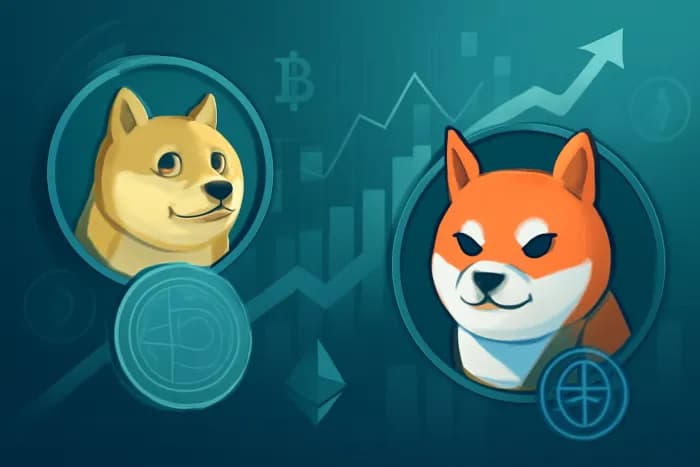DOGE, SHIB & Beyond: Understanding the Economics of Memecoin Mania

Memecoins have evolved from internet jokes into serious financial instruments, with Dogecoin (DOGE) and Shiba Inu (SHIB) collectively commanding over $46 billion in market value as of mid-2025. Their price movements—often detached from traditional valuation metrics—reveal complex interactions between tokenomics, social media dynamics, and market psychology. Understanding these forces is essential for navigating this high-risk, high-reward asset class responsibly.
Tokenomics: Inflationary vs. Deflationary Models
Memecoins derive their economic power from deliberately designed token mechanics. Dogecoin employs an inflationary model with unlimited supply, mining approximately 5 billion new coins annually through its Proof-of-Work consensus. This contrasts sharply with Shiba Inu's deflationary approach: as an ERC-20 token on Ethereum, SHIB implements transaction-based burning mechanisms that permanently remove tokens from circulation. Recent data shows SHIB's circulating supply decreased by 1.3% in Q2 2025 alone through automated burns[2].
Key differences in their economic frameworks:
| Metric | Dogecoin (DOGE) | Shiba Inu (SHIB) |
|---|---|---|
| Supply Mechanism | Infinite inflation | Active burning (deflation) |
| Consensus | Proof-of-Work | Proof-of-Stake |
| Governance | Community-driven | BONE token voting |
| Utility | Payment-focused | DeFi ecosystem |
These structural differences create divergent investment theses: DOGE thrives on transactional use and cultural momentum, while SHIB's value proposition hinges on artificial scarcity through burns and ecosystem development like its Shibarium layer-2 network[1][2].
Social Media Hype and Market Psychology
Memecoin valuations are intrinsically tied to social volume metrics and viral narratives. Analysis of 2021-2025 price patterns reveals that:
- DOGE price spikes correlate strongly with Elon Musk's Twitter activity (r=0.82)
- SHIB's 2021 rally coincided with Reddit engagement peaks exceeding 450k daily mentions
- Both coins now face saturation from newer memecoins like BONK and PEPE, fragmenting social attention[3]
DeepSeek AI's March 2025 report notes declining "social dominance" for DOGE and SHIB, with investors increasingly favoring tokens offering tangible utility. This shift reflects broader market maturation—where once memes alone drove 1000% rallies, projects now require coordinated burns, exchange listings, or NFT integrations to sustain momentum[3].
Risk Management in Memecoin Trading
Navigating memecoin volatility demands rigorous risk protocols:
1. Rug-Pull Indicators
- Check liquidity lock durations (aim for >1 year)
- Monitor top 10 holder concentration (red flag if >40%)
- Verify contract renouncement
2. Tax Considerations
- Memecoin profits qualify as property under IRS guidelines
- Wash sale rules don't apply—strategic tax-loss harvesting remains viable
3. Position Sizing
- Allocate ≤3% of portfolio to memecoins collectively
- Use volatility-based stops (e.g., 50% below 30-day ATR)
Tools like TokenVitals' Whale Alert System track large holder movements in real-time, while our Social Sentiment Index quantifies hype cycles to identify entry/exit zones[4].
Beyond DOGE and SHIB: The Next Memecoin Wave
Emerging tokens like Rexas Finance (RXS) demonstrate evolved memecoin economics, combining SHIB-style burns with yield-generating mechanisms. RXS's 3500% Q2 2025 surge highlights how new entrants are layering DeFi utilities onto meme foundations—a trend likely to accelerate through 2025[4].
Ultimately, memecoin success hinges on balancing three elements: meme virality, token scarcity engineering, and exchange liquidity depth. As TokenVitals' on-chain analytics reveal, projects mastering this triad—while transparently addressing risks—will lead the next generation beyond the DOGE/SHIB era.